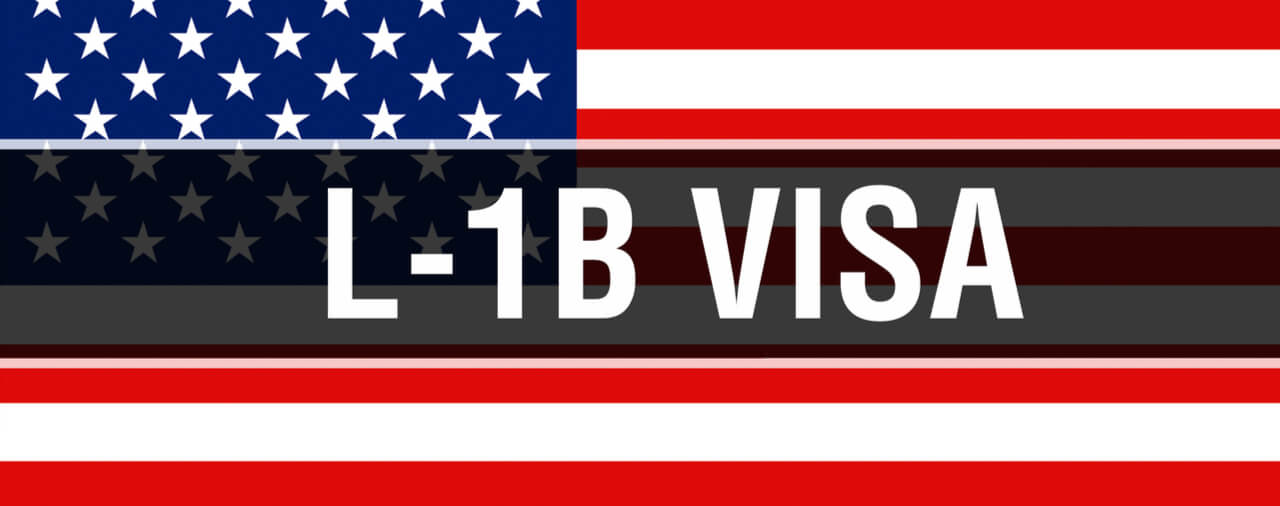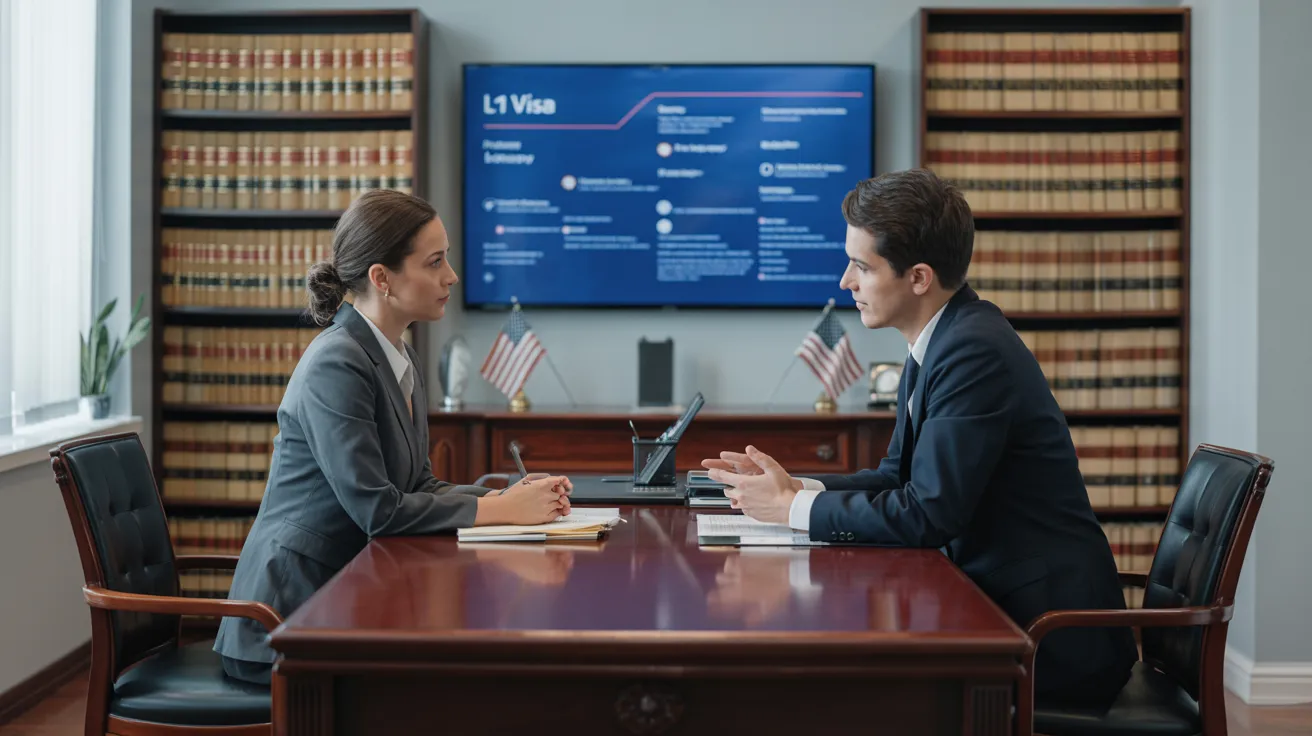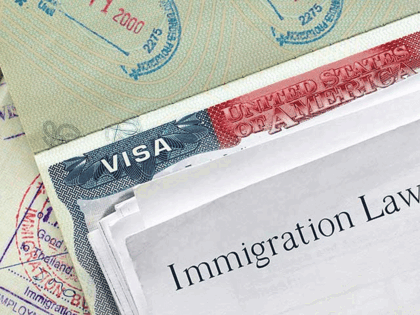Whatever You Required to Find Out About the L1 Visa: Advantages, Demands, and More
The L1 Visa serves as a critical device for international companies looking for to move staff members to the United States, promoting both functional performance and the transfer of specialized understanding. With distinct categories for executives and specialized specialists, this visa provides numerous benefits, consisting of possible paths to irreversible residency. Recognizing the qualification requirements and application process is necessary for a successful shift. As we check out the details of the L1 Visa, it becomes clear that steering its complexities is critical for organizations aiming to take advantage of worldwide skill effectively. What obstacles might you experience along the road?
Summary of the L1 Visa
The L1 visa is a non-immigrant category that enables business to move workers from foreign offices to their U.S. branches, subsidiaries, or affiliates. This visa group is especially useful for multinational corporations looking for to leverage their international skill swimming pool by relocating essential personnel to boost operations in the United States. The L1 visa is divided right into 2 key subcategories: L1A for supervisors and execs, and L1B for workers with specialized expertise, each accommodating different business needs.The L1 visa promotes the smooth movement of certified workers, thereby cultivating worldwide service development and functional effectiveness. With the L1A visa, companies can transfer individuals that hold supervisory or executive roles, allowing them to make strategic decisions and look after particular departments within the united state entity. On the other hand, the L1B visa is designed for staff members having specialized expertise necessary to the company's rate of interests, ensuring that the united state workplace gain from special skills and expertise.One remarkable advantage of the L1 visa is its dual intent nature, which permits holders to obtain permanent residency while preserving their non-immigrant standing. Furthermore, partners and kids of L1 visa holders can accompany them to the USA under the L2 visa classification, which likewise permits job consent
Types of L1 Visas
Multiple kinds of L1 visas accommodate the varied needs of multinational firms aiming to transfer employees to the USA. The 2 main groups of L1 visas are L1A and L1B, each made for specific roles and responsibilities within an organization.The L1A visa is intended for managers and executives. This category permits business to move people who hold managerial or executive settings, allowing them to supervise procedures in the united state. This visa is legitimate for a preliminary period of up to three years, with the opportunity of extensions for a total of approximately seven years. The L1A visa is especially useful for business looking for to establish a strong leadership presence in the U.S. market.On the various other hand, the L1B visa is marked for employees with specialized understanding. This consists of individuals who have innovative proficiency in details locations, such as exclusive modern technologies or distinct procedures within the firm. The L1B visa is also legitimate for an initial three-year period, with expansions readily available for approximately 5 years. This visa group is optimal for firms that require employees with specialized skills to boost their procedures and preserve an one-upmanship in the U. L1 Visa.S.Both L1A and L1B visas enable dual intent, indicating that visa owners can use for permanent residency while on the visa. Understanding the distinctions between these 2 groups is crucial for organizations preparing to browse the intricacies of employee transfers to the United States successfully
Qualification Needs
To qualify for an L1 visa, both the employer and the staff member need to meet specific qualification requirements set by U.S. migration authorities. The L1 visa is created for intra-company transferees, permitting multinational business to transfer staff members to their U.S. offices.First, the employer has to be a certifying organization, which suggests it should have a parent business, branch, subsidiary, or associate that is working both in the U.S. and in the foreign country. This connection is crucial for showing that the employee is being moved within the exact same business structure. The employer must likewise have actually been doing service for at the very least one year in both locations.Second, the employee has to have been utilized by the international business for a minimum of one continuous year within the three years preceding the application. This work needs to remain in a managerial, exec, or specialized knowledge ability. For L1A visas, which cater to managers and execs, the worker should show that they will continue to operate in a comparable capacity in the united state For L1B visas, intended for staff members with specialized expertise, the specific should have one-of-a-kind expertise that adds substantially to the business's operations.
Application Process
Steering the application process for an L1 visa entails numerous necessary steps that should be completed precisely to ensure an effective outcome. The primary step is to establish the proper classification of the L1 visa: L1A for managers and execs, or L1B for employees with specialized knowledge (L1 Visa). This difference is significant, as it influences the documents required.Once the group is identified, the U.S. employer should submit Kind I-129, Petition for a Nonimmigrant Worker. This form ought to include thorough info concerning the business, the staff member's role, and the nature of the job to be performed in the U.S. Accompanying documents generally consists of proof of the relationship between the U.S. and foreign entities, proof of the staff member's qualifications, and information concerning the job offer.After entry, the united state Citizenship and Immigration Solutions (USCIS) will certainly assess the application. If approved, the worker will be informed, and they can then use for the visa at an U.S. consular office or embassy in their home country. This includes completing Form DS-160, the Online Nonimmigrant copyright, and scheduling an interview.During the interview, the candidate has to offer various records, including the accepted Kind I-129, proof of work, and any added sustaining proof. Adhering to the interview, if the visa is provided, the worker will get a visa stamp in their copyright, allowing them to go into the U.S. to benefit the funding company. Correct prep work and comprehensive paperwork are essential to steering this procedure effectively
Benefits of the L1 Visa
Among the noteworthy advantages of the L1 visa is its capability to facilitate the transfer of crucial workers from global offices to the United States. This visa is specifically useful for multinational business seeking to keep consistency in operations and leadership across borders. By enabling executives, managers, and specialized staff members to work in the U.S., organizations can guarantee that their most necessary talent is available to drive company objectives.Another significant benefit of the L1 visa is its relatively uncomplicated application process compared to other work visas. Organizations can petition for the L1 visa without the need for a labor certification, which simplifies the recruitment of foreign staff members. The visa can be approved for an initial duration of up to three years, with the opportunity of expansions, assisting in long-term assignments.The L1 visa additionally supplies a course to permanent residency. Employees on L1A visas (for managers and executives) can get a copyright after one year, expediting their modification to irreversible condition. This attribute is an appealing reward for talented individuals looking for stability in the united state workforce.Additionally, L1 visa owners can bring their immediate relative to the U.S. under L2 standing, permitting spouses and kids to live and examine in the nation, improving the general allure of this visa group. On the whole, the L1 visa serves as an important tool for global businesses, cultivating cross-border cooperation and ability movement.
Usual Difficulties
While the L1 visa supplies countless advantages for multinational business and their staff members, it is not without its difficulties. One notable obstacle is the rigorous documents and eligibility requirements imposed by the U.S. Citizenship and Immigration Services (USCIS) Firms have to supply thorough proof of the foreign worker's certifications, the nature of the service, and the certifying partnership in between the U.S. and international entities. This procedure can be lengthy and may call for lawful knowledge to navigate successfully.Another challenge is the possibility for analysis during the request process. USCIS police officers may examine the legitimacy of the organization procedures or the staff member's function within the organization. This analysis can result in hold-ups or perhaps denials of the copyright, which can considerably influence the company's operational plans and the employee's job trajectory.Furthermore, the L1 visa is tied to the funding employer, which means that task modifications can make complex the visa condition. If an L1 visa owner wants to switch over employers, they must often seek a various visa classification, which can include intricacy to their immigration journey.Lastly, preserving compliance with L1 visa policies is important. Companies need to ensure that their employee's duty lines up with the preliminary request which the organization remains to meet the qualification needs. Failure to L1 Visa do so can result in cancellation of the visa, impacting both the worker and the organization. These challenges necessitate detailed preparation and recurring administration to guarantee a successful L1 visa experience.
Tips for Success


To efficiently navigate the L1 visa procedure, careful prep work is important. Begin by thoroughly recognizing the certain needs for the L1 visa category you are looking for, whether L1A for supervisors and execs or L1B for workers with specialized knowledge. Gather all necessary paperwork early in the process, consisting of evidence of your employment history, business framework, and the nature of the company operations.Engage legal guidance experienced in immigration regulation to guide you through the intricacies of the application. A lawyer can help guarantee that your application is total, exact, and compelling. They can also assist in planning for prospective ask for proof (RFEs) by proactively attending to locations that may increase questions.Additionally, maintain clear communication with your company, who should give crucial assistance for your application. Confirm that they understand their obligations, including submitting the necessary applications and giving paperwork that corroborates your function in the organization.Prepare for the visa meeting by exercising solution to common concerns regarding your specialist history and the nature of your employment. Demonstrating self-confidence and clearness can considerably affect the end result of your application.
Often Asked Concerns
Can Family Members Members Accompany L1 Visa Owners?
Yes, relative can go along with L1 visa holders. Partners and single children under 21 years of ages are qualified for L2 visas, which permit them to live and examine in the USA during the L1 holder's remain.
How Much Time Can L1 Visa Owners Remain In the U.S.?
L1 visa owners can initially remain in the united state for as much as 3 years. This period might be prolonged, allowing an optimum stay of 7 years for L1A visa owners and 5 years for L1B visa owners
Is the L1 Visa a Double Intent Visa?
The L1 visa is considered a dual intent visa, permitting owners to seek permanent residency while maintaining their temporary non-immigrant condition. This adaptability promotes long-lasting profession possibilities for international employees within united state companies.

Can L1 Visa Owners Use for an Environment-friendly Card?
Yes, L1 visa owners can look for a permit (L1 Visa Requirements). The L1 visa sustains dual intent, allowing holders to pursue permanent residency while maintaining their non-immigrant condition, promoting a smoother changeover to a copyright
What Happens if an L1 copyright Is Refuted?
If an L1 copyright is rejected, the applicant might obtain a notice laying out the reasons for denial. They can appeal the decision, reapply, or discover alternative visa options relying on their circumstances and certifications.
Verdict
In summary, the L1 Visa functions as a crucial tool for international companies looking for to transfer employees to the United States. Recognizing the distinctions between L1A and L1B classifications, along with the qualification needs and application procedures, is important for successful navigation of this non-immigrant classification. The benefits supplied, including structured applications and pathways to permanent residency, even more improve its charm. L1 Visa. Dealing with typical challenges effectively can result in a much more beneficial result in the copyright procedure